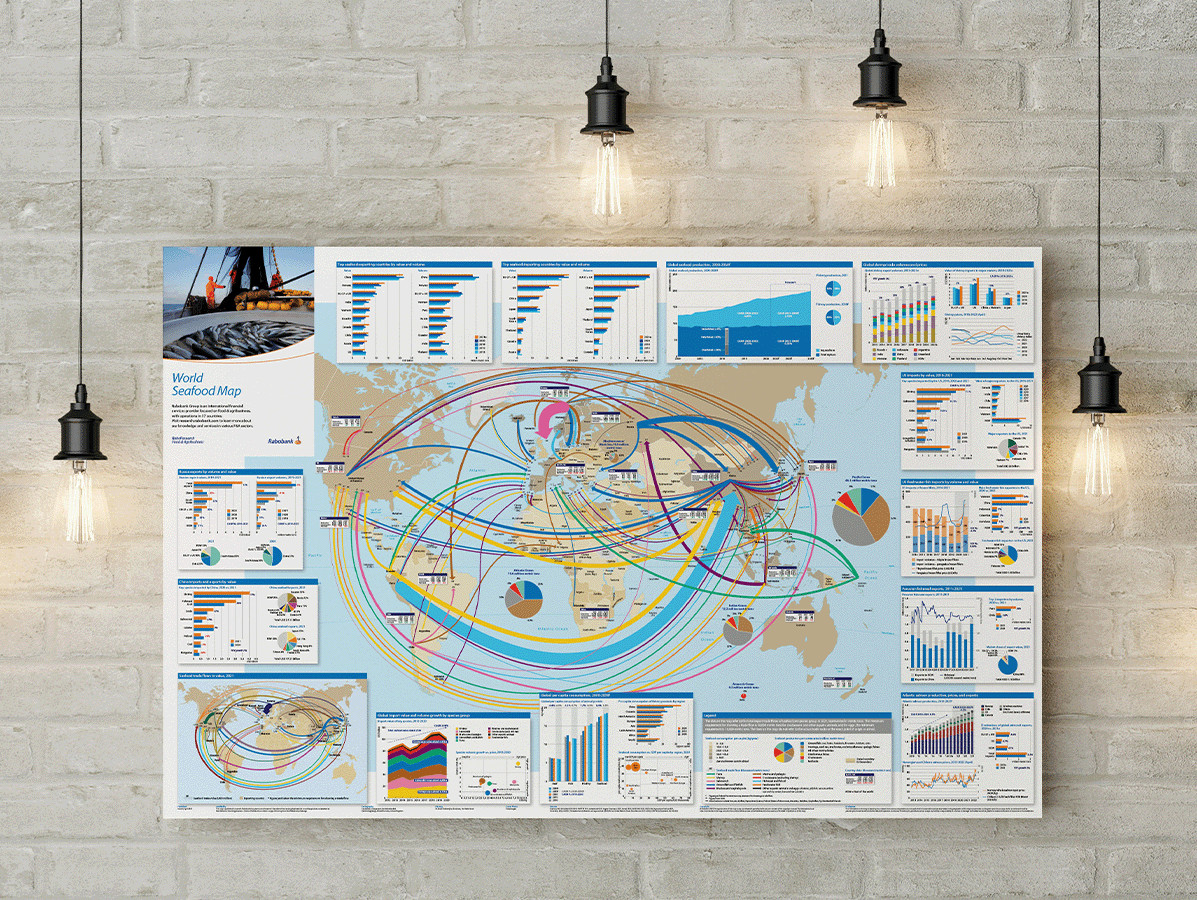
Global demand for fish and seafood rose sharply during corona and is expected to reach USD 13 billion by 2021. Rising demand for fisheries and aquaculture products made fish and seafood the most traded animal protein in 2021, with an estimated trade value of $164 billion and a compound annual growth rate of 2.44 percent (2011-2021). By 2021, roughly 3.6 times more fish and seafood was traded globally than beef, five times more than pork and eight times more than poultry, according to Rabobank.
In 2021, total US seafood imports were estimated at $28.1 billion. That is an increase of $8.6 billion compared to total imports in 2016. These were mainly shrimp, salmon, crab and lobster, accounting for 91 per cent of the total value added.
China's seafood imports were estimated at $17.2 billion in 2021. China's import volume showed a compound annual growth rate of 4.4 per cent from 2013 to 2021, while the import value showed a growth rate of 10.1 per cent. Demand is therefore shifting towards more expensive fish and seafood. This trend can also be seen in the sharp increase in imports following the corona lockdowns. Imports in 2021 were $2.4 billion higher than in 2020.
Rabobank expects the call for sustainability and the demand for top quality healthy seafood to continue to drive trade volumes of high value fish and seafood in the coming years. Exporting countries such as India and Ecuador can take advantage of the emerging trends and jump into the gap in the market. The bank highlights unprecedentedly high prices for many seafood products due to the challenges facing international trade, such as rising freight and energy costs and the ongoing lockdowns in China. However, recent data suggests that the impact on seafood demand could be significant. Especially if there is a recession in the second half of 2022 and in 2023. This will affect market prices for fish and seafood and the value of trade flows.
Source: Rabobank